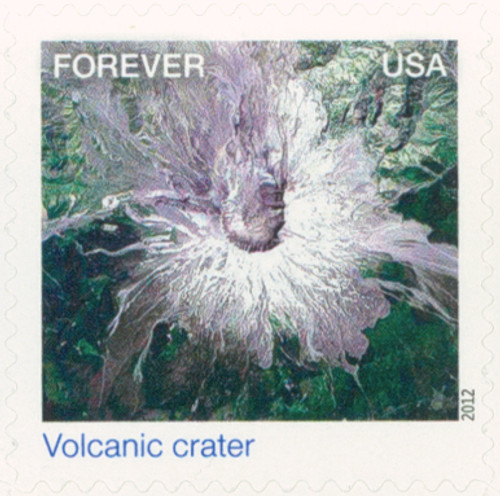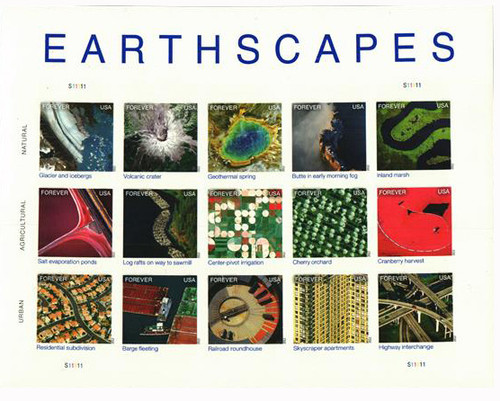
2012 First-Class Forever Stamp,Earthscapes: Volcanic Crater
# 4710b - 2012 First-Class Forever Stamp - Earthscapes: Volcanic Crater
$2.25 - $3.75
U.S. #4710b
2012 45¢ Volcanic Crater
Earthscapes
2012 45¢ Volcanic Crater
Earthscapes
Issue Date: October 1, 2012
City: Washington, DC
City: Washington, DC
Quantity: 2,670,000
Printed By: Banknote Corporation of America, Sennett Security Products
Printing Method: Offset
Perforations: Die Cut 10 ¾
Color: multicolored
When a volcano erupts, it changes the shape of the mountain and its surrounding landscape. A stately mountain peak is replaced by a wide volcanic crater. On May 18, 1980, Americans watched their televisions with awe as Mount St. Helens, in Washington state, erupted. It was the deadliest and costliest volcano in U.S. history.
Before its eruption, the mountain was nicknamed “Mount Fuji of America” because of its snow-covered, symmetrical peak. It is the most active volcano in the Cascade mountain range.
After experiencing an earthquake two months before the eruption, steam began escaping, then a bulge grew on the north side. A second earthquake triggered the collapse of the mountain and an avalanche of debris. When the magma spilled from the crater, it cut a path of destruction over 230 square miles. The height of St. Helens was reduced by around 1,300 feet and a mile-wide crater
was formed.
Today, the surrounding land is recovering, and plants and trees grow in soil enriched by minerals the mud flows left behind. The stark beauty of the volcano draws hikers to venture up the trail and look over the edge of the crater.
U.S. #4710b
2012 45¢ Volcanic Crater
Earthscapes
2012 45¢ Volcanic Crater
Earthscapes
Issue Date: October 1, 2012
City: Washington, DC
City: Washington, DC
Quantity: 2,670,000
Printed By: Banknote Corporation of America, Sennett Security Products
Printing Method: Offset
Perforations: Die Cut 10 ¾
Color: multicolored
When a volcano erupts, it changes the shape of the mountain and its surrounding landscape. A stately mountain peak is replaced by a wide volcanic crater. On May 18, 1980, Americans watched their televisions with awe as Mount St. Helens, in Washington state, erupted. It was the deadliest and costliest volcano in U.S. history.
Before its eruption, the mountain was nicknamed “Mount Fuji of America” because of its snow-covered, symmetrical peak. It is the most active volcano in the Cascade mountain range.
After experiencing an earthquake two months before the eruption, steam began escaping, then a bulge grew on the north side. A second earthquake triggered the collapse of the mountain and an avalanche of debris. When the magma spilled from the crater, it cut a path of destruction over 230 square miles. The height of St. Helens was reduced by around 1,300 feet and a mile-wide crater
was formed.
Today, the surrounding land is recovering, and plants and trees grow in soil enriched by minerals the mud flows left behind. The stark beauty of the volcano draws hikers to venture up the trail and look over the edge of the crater.









